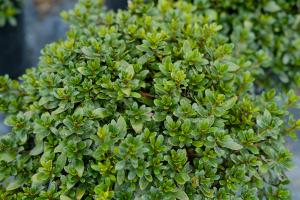Introduction
Tomatoes are a popular and nutritious vegetable that many of us enjoy growing in our gardens. While there are many strategies for promoting healthy tomato plants, one product that is often recommended is Epsom salt. Epsom salt is a mineral compound made of magnesium and sulfur, and it can provide a variety of benefits when added to the soil around tomato plants. However, one common question that many gardeners have is: how much Epsom salt should I use per tomato plant? In this article, we will explore the answer to this question and discuss some of the benefits and risks of using Epsom salt for tomato plants.
The Benefits of Epsom Salt for Tomato Plants
Before we dive into the question of how much Epsom salt to use, let's first discuss why this compound might be beneficial for tomato plants. Here are a few potential benefits:
Improves nutrient uptake: Epsom salt contains magnesium, which is an essential mineral for plant growth. Magnesium is required for the uptake of other important nutrients such as nitrogen, phosphorus, and sulfur.
Increases fruit quantity and quality: Some gardeners report that using Epsom salt on their tomato plants leads to increased yields and larger, healthier fruit.
Reduces stress: Epsom salt may help to reduce stress on tomato plants caused by drought, heat, or other environmental factors.
Determining the Right Amount of Epsom Salt
So, how much Epsom salt should you use for your tomato plants? The answer depends on a few factors, such as the size of your plants and the condition of your soil.
As a general rule of thumb, many gardeners recommend using about one tablespoon of Epsom salt per foot of plant height. So, if your tomato plant is three feet tall, you might apply three tablespoons of Epsom salt around the base of the plant.
However, it's important to note that not all soil types will require the same amount of Epsom salt. If your soil is already rich in magnesium, you may not need to add any additional Epsom salt. On the other hand, if your soil is deficient in magnesium, you may need to add more than the recommended amount. Testing your soil's nutrient levels can help give you a better idea of how much Epsom salt to use.
How to Apply Epsom Salt to Tomato Plants
Once you have determined the right amount of Epsom salt for your tomato plants, it's important to apply it correctly to ensure maximum benefits. Here are a few tips:
Apply to moist soil: It's best to apply Epsom salt to soil that is already moist, as this will help the salt to dissolve and distribute more easily.
Avoid touching foliage: When applying Epsom salt, try to keep it off the foliage of your tomato plants, as it can cause leaf burn.
Apply in the morning: The best time to apply Epsom salt is in the morning, as this will give the plants time to absorb the nutrients before the heat of the day.
Repeat as needed: Depending on your soil's nutrient levels and the condition of your plants, you may need to apply Epsom salt multiple times throughout the growing season.
The Risks of Using Epsom Salt on Tomato Plants
While Epsom salt can provide many benefits to tomato plants, it's important to be aware of the risks as well. Here are a few potential downsides:
Over-fertilization: If you use too much Epsom salt, it can lead to over-fertilization, which can cause damage to your tomato plants.
Leaf burn: As mentioned, Epsom salt can cause leaf burn if it comes into contact with the foliage, so it's important to be careful when applying it.
No guarantee of results: While many gardeners swear by the benefits of Epsom salt, there is no guarantee that it will work for every plant in every soil type.
Conclusion
So, how much Epsom salt should you use per tomato plant? The answer is generally about one tablespoon per foot of plant height, but this can vary depending on your soil's nutrient levels. By following the proper application methods and being aware of the risks, you can maximize the potential benefits of Epsom salt for your tomato plants. Happy gardening!

 how many times do yo...
how many times do yo... how many planted tre...
how many planted tre... how many pine trees ...
how many pine trees ... how many pecan trees...
how many pecan trees... how many plants comp...
how many plants comp... how many plants can ...
how many plants can ... how many plants and ...
how many plants and ... how many pepper plan...
how many pepper plan...































